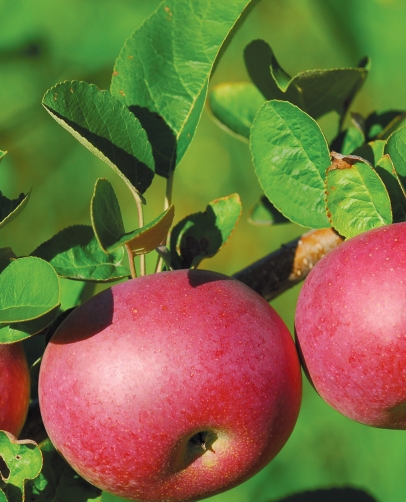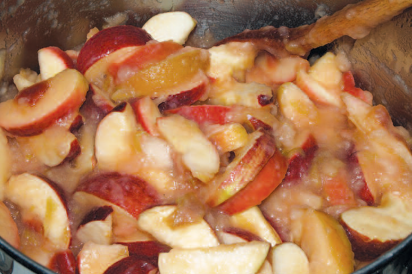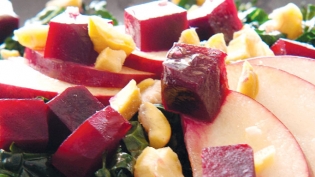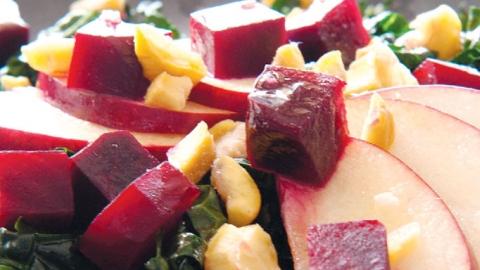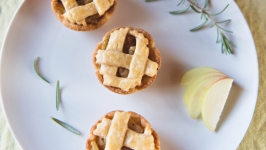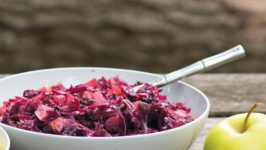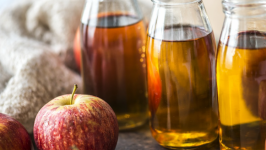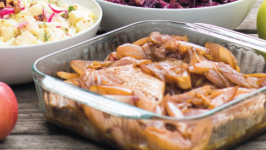It's A Saucy Little Tune: Mac is back...
That I would develop such a keen commitment to fresh local foods seems inevitable in retrospect. One of my earliest memories is of traipsing along behind my dad into the basement cold room of our Quonset barn to grab a few apples out of the many square wooden crates stacked on the chilly concrete floor. Even now, 60 years later, I can close my eyes and breathe in memories of that sweet, earthy air smelling of burlap and drying leaves, air that was a little sharp from the acids breathed out by the fruit.
The first apples to go into storage each year were the McIntosh, always my favorites. Later, when I got old enough to go down the hill from our house to the main apple block, my sister and I would climb up into the first crotch or two of an old standard Mac tree to sit and gnaw on one apple after another—sometimes two or three weeks before they were fully ripe. These green, tangy and sharptasting fruits felt chalky on our teeth. Still, for a 5-year-old, perching in one of those magnificent spreading trees was some kinda’ special: In a softly green–lighted world held up by great big wooden arms, no one could see us unless they knew where to look.
In late August, the grasses dried and the insects buzzed and the sun still blazed hard onto the sandy floor of the hot orchard out beyond our leafy-shaded dome. Soon enough we would go back to school, and then the nights would start chilling, with something better yet to follow: sweeter, mellower, fully ripened Macs!
The classic description of this cultivar always contains a lyric something like this: “The McIntosh apple has a bright-white tender flesh, and is wrapped in a dark-red or crimson satin-like skin. The flavor is sweet, but balanced by a refreshing acidity. This apple has a chunky bite. The first McIntosh apple was a chance seedling discovered in 1796 by John McIntosh in Dundas County, Ontario...” And what a find it was! Since then the McIntosh has served as a doting parent, contributing its superb flavor and other genetic qualities to countless other successful varieties, including Cortland, Empire, Paula Red, Spartan, Macoun, Fireside—some say even Honeycrisp!
However, it was a later bit of meteorological serendipity that led to the emergence of the McIntosh as the dominant variety in New England and the Midwest: During two test winters in the late 1920s, almost all the trees of one dominant apple variety (Baldwin) grown in the northern U.S. were killed. When most McIntosh trees survived the same disaster, many severely pruned-back Baldwin stumps were grafted with scion wood from the more winter-hardy McIntosh, and a new prodigy stepped forward for its solo.So, our last verse has a culinary coda. Although McIntosh make for great fresh eating right off the tree and are even quite toothsome for a few weeks thereafter, they become soft when stored, even downright mealy within a month or so after harvest. But don’t despair, for the superb flavor remains, and brings us around to the very highest incarnation of a Mac: playing the bass line in a great applesauce! I can’t take creative credit for the following arrangement. Over time, I have simply ushered in the same ensemble of varieties that my father selected when we cooked and then milled great steaming cauldrons of sauce each autumn, another reminder that some things are simply not to be improved on.
Applesauce
Here are the volume ratios by variety, in cored and quartered (but never peeled!) apples:
6 PARTS MCINTOSH
1 PART NORTHERN SPY
1 PART JONATHAN
Warning: To get this right, measure cut-up fruit, and don’t count apples–McIntosh can vary a lot in size, Jonathans are pretty small and Northern Spys run about as big around as your head.
All right, then. Tap, tap, tap. Everyone ready?
THE BEST BREAKFAST EVER?
All my life, I have been unable to wake up and immediately torment my stomach with rich foods like eggs and breakfast meats, although I gladly eat them later in the day. This applesauce warmed and spread on whole-wheat toast or mixed in equal parts with oatmeal or other hot cereal makes for a quite palatable and soothing start to a chilly morning. A healthy, delicious meal that most kids love!
This timeless piece previously appeared in our first year of publication, Fall 2008.
Buying and storing apples for sauce
McIntosh ripen in this area by mid-September, often close to a full month before their sauce-mates, Jonathan and Northern Spy. Macs are plenty mellow by mid-October, and a grower might give you a nice bargain on a bushel of mostly Macs at this time. By ratio, you’ll need three pecks Macs and one half peck each of Spy and Jonathan for a freezer-filling bushel of applesauce. The Macs will likely eat pretty fluffy, but they are still just fine for sauce. Keep these (and all your other apples) cool and covered until you cook or eat them.


